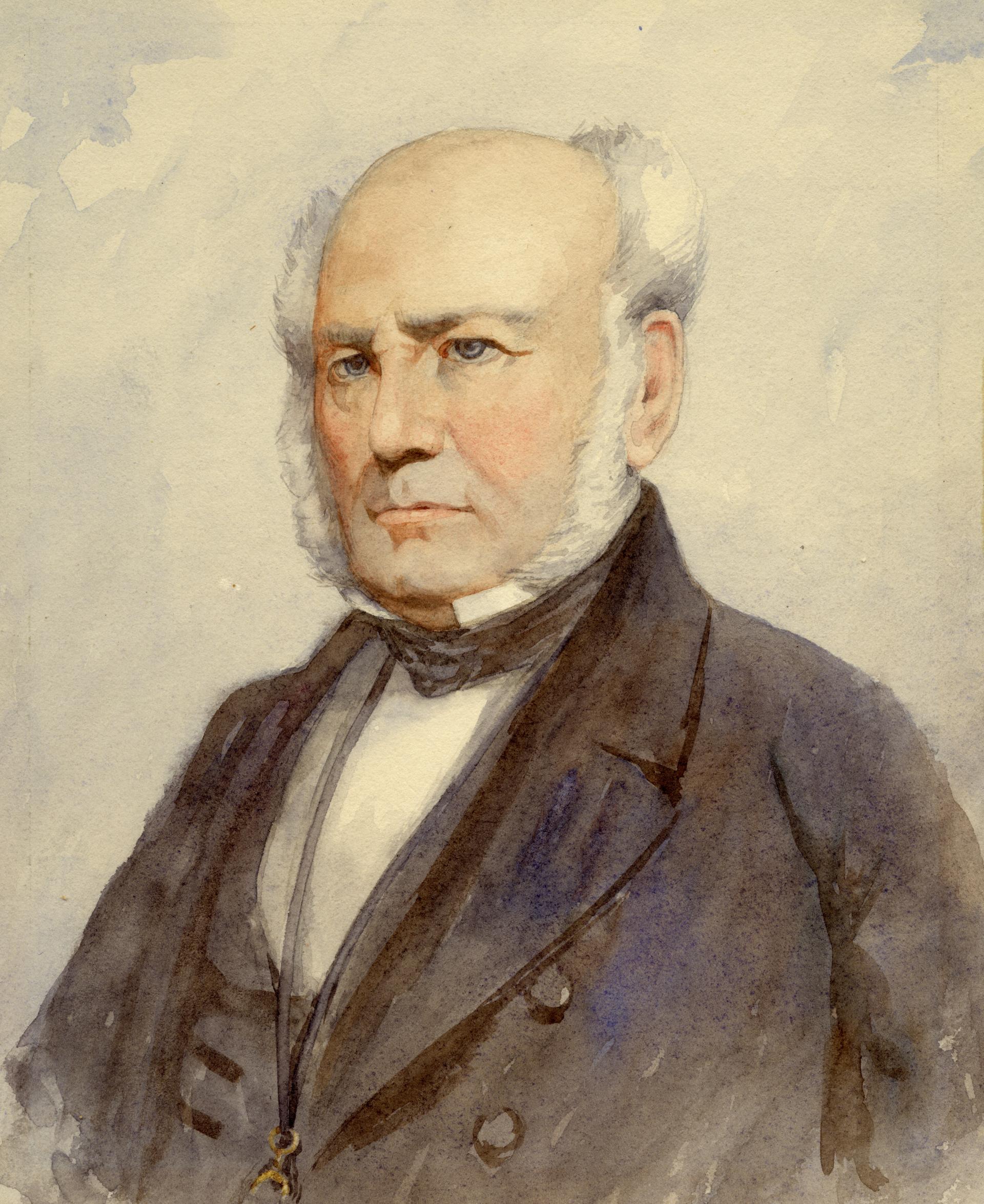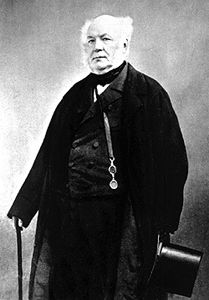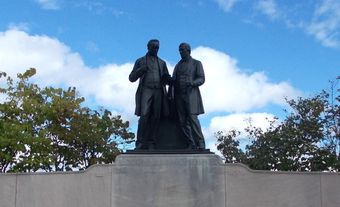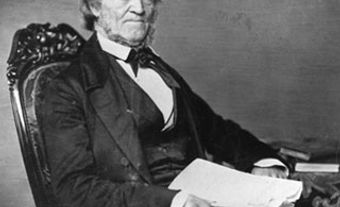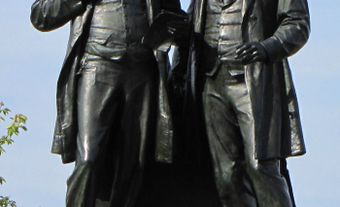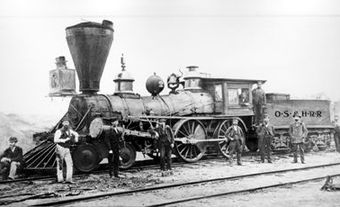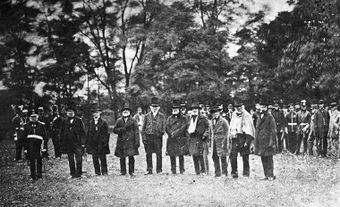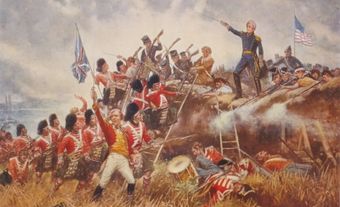Sir Allan Napier MacNab, soldier, lawyer, businessman, politician (born on 19 February 1798 in Newark [Niagara-on-the-Lake], Upper Canada; died on 8 August 1862 in Hamilton, Canada West). A forceful personality, MacNab had a deep influence on many aspects of pre-Confederation politics in Canada. He opposed the Upper Canada Rebellion and supported a number of Tory policies. MacNab became the premier of the United Canadas from 1854–56.
Military Service
As a youth, Allan Napier MacNab served in the War of 1812. He fought at the Battle of York in the militia. (See Canadian Army.) MacNab was promoted ensign in the 49th Foot Regiment in March 1814.A military enthusiast, after the war MacNab looked for other ways to serve. In 1820, he became captain in the York militia. Ten years later, he was appointed lieutenant-colonel of the 4th Regiment of Gore militia. During the Rebellions of 1837–38, MacNab led approximately 1,000 men to Montgomery’s Tavern to confront the rebels. He also commanded troops sent to London and was in part responsible for the destruction of the Caroline, an American ship supplying the rebels. (See Caroline Affair.)
Law Practice and Business Endeavours
MacNab started his law career working in the office of Judge D’Arcy Boulton Sr. In 1826, he moved from York (now Toronto) to Hamilton, where he set up his own practice. MacNab also began to purchase and develop land, which became a prosperous enterprise. An entrepreneur, MacNab and Glasgow merchant Peter Buchanan were chiefly responsible for the construction of the Great Western Railway. In 1835, he controlled a majority of the shares in the Gore Bank. MacNab also owned a dock on Burlington Bay and operated a steamship line.
Did You Know?
Dundurn Castle, Sir Allan Napier MacNab’s stately 40-room mansion, still stands today in Hamilton and operates as a museum. A descendant of MacNab, Her Royal Highness Queen Consort Camilla, wife to King Charles III, is the museum’s official patron.

Political Career
In 1829, MacNab took part in an event that started him on a career in politics. During the incident known as the “Hamilton Outrage,” Tories paraded an effigy of Lieutenant Governor Sir John Colborne through the streets of Hamilton. During a later investigation of the event, MacNab refused to testify because he did not want to incriminate his friends or clients. He was sentenced to ten days in jail for contempt. Afterward, MacNab became popular with the Tories. He took advantage of this popularity and used it to help get him elected as the Member of Parliament for Wentworth County.
In the first phase of his political career (1830–35), MacNab vigorously promoted economic development and moderate Tory policies. He opposed responsible government, fearing it would sever ties to Britain. In the second phase (1836–49), he became an extreme Tory. He was knighted for his efforts to help quash the Rebellion of 1837–38. MacNab vainly stressed loyalty as an issue in public policy.
In the third phase (1850–56), he declared, "all my politics are railroads." MacNab assumed leadership roles in various railways, including the Grand Trunk Railway, the Galt and Guelph Railway, the Hamilton and Toronto Railway, and the Hamilton and Port Dover Railway. As leader of the Conservatives, MacNab was also concerned to move his party back from extremism. In 1854, he played an important role in the formation of the Liberal-Conservative alliance and became premier of the Canadas (1854–56). In 1860, he was elected to the Legislative Council of the Province of Canada, a position he kept until his death two years later.

 Share on Facebook
Share on Facebook Share on X
Share on X Share by Email
Share by Email Share on Google Classroom
Share on Google Classroom
